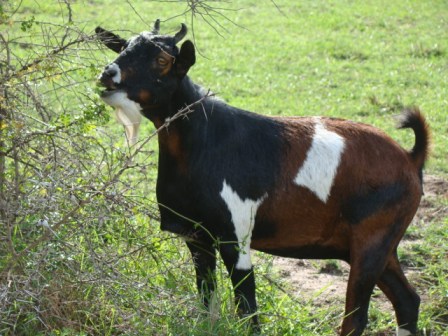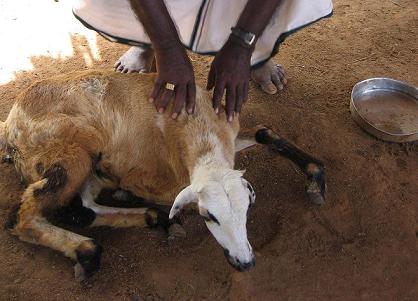Disease is a condition of the body that is different from the normal condition of the body.
When an animal is diseased, then we say it experiences the effect of disease which is called illness or sickness.

There are many things that may cause illness in livestock such as:
• Living organisms are the major cause of livestock diseases. Such living things or disease germs include bacteria, fungi, virus and protozoa.
• Lack of certain nutrients in the food.
• Food poisoning which includes eating rotten feeds, chemicals, plastic materials, or some animals such as toads (which may be taken in the water the animals drinks).
• In some cases, the animal may be born sickly or with higher chances of becoming ill in future.
It is important to keep livestock in good health because healthy livestock are more productive, cheap to maintain since they do not need medicine, and are not a danger to consumers or other animals.
The following shows the sign of good and ill health in animals.
• Animals have bright and clear eyes
• Have smooth, shiny and bright coats (skin)
• Produce normal sounds
• Urine and faeces have no blood stains
• Walks steadily
• Animals have a good appetite
• Produce products like eggs and milk normally
• Animals have normal temperature

• Eyes of a sick animal are watery
• Rough looking coat (skin), hair standing and some patches may lack hair
• Produce abnormal sounds like coughing or sneezing
• Urine and faeces may be blood stained

• May walk with difficulty or unsteady or may not move at all
• Loses appetite
• Reduce production of milk or eggs or stops altogether
• Temperature may rise or fall beyond normal
• Dung or faeces are too watery or too hard and sometimes accompanied with pain.
These may be:
1. Reduced quality of products e.g. poor hide and skin.
2. Lowered or reduced yield or product.
3. Transmission of disease to humans such as TUBERCULOSIS from infected milk or BRUCELLOSIS
4. Death of infected animal.
Just like livestock are attacked by parasites, human beings are also attacked by worms.
Some of the human intestinal worms are tapeworms, hookworms, threadworms and roundworms.
How can these be controlled?
Worms can be controlled through:
Maintenance of proper hygiene and sanitation
Many human worms are spread through contamination of food and water.
Therefore public and personal cleanliness is very important.
Proper use of latrines, cleaning the toilets and washing hands before meals and after visiting the toilet is crucial.